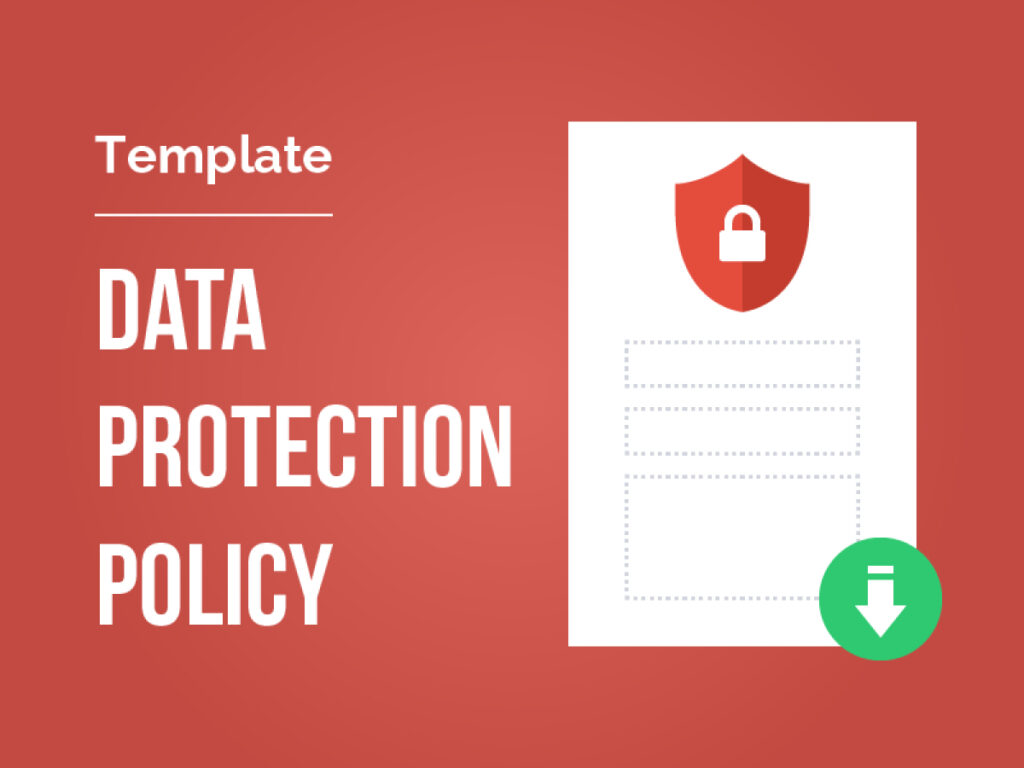What is a Data Protection Policy?
If you’re an organization that collects data, you need to make sure that you provide clear documentation to your users on how you handle and protect all the information collected and processed about its users.

This is where a data protection policy comes into play.
A data protection policy is a framework within organizations that helps outline how personal data is managed, protected, and used in a way that complies with legal and regulatory requirements.
In fact, it serves as a guide for the organization’s practices and procedures to ensure that user data is handled securely and ethically.
Purpose of a Data Protection Policy
Creating a data protection policy in your organization holds several purposes, such as:
1. Compliance with Legal Obligations
Maintaining a data protection policy helps ensure that an organization meets legal standards and avoids being fined for violating data protection laws.
For example, organizations are required to adhere to data protection laws that govern the use of personal data in the jurisdictions they operate. For instance, the General Data Protection Regulation (GDPR) in the European Union sets requirements for data processing and grants rights to individuals regarding their personal data.
So, your data protection policy will define the standards that you have to maintain and will help comply with these requirements.
2. Protection of Personal Data
Next, it helps protect personally identifiable information (PII). You can establish clear guidelines and procedures in your data protection policy for data handling, storage, and processing.
This not only safeguards individuals’ information but also builds trust between the organization and its customers, employees, and partners.
3. Assurance of Privacy Rights
A data protection policy showcases an organization’s commitment to respecting and upholding the privacy rights of data subjects.
It provides a transparent framework that informs individuals about how their data is used, their rights regarding their data, and how they can exercise those rights. This transparency helps build trust and confidence in the organization’s data practices.
Data Peace Of Mind
PVML provides a secure foundation that allows you to push the boundaries.

Types of Data Protection Policies
When you’re building a data protection policy, it’s important to understand that there are different types available:
- Customer data protection policy: This policy focuses on protecting customer information, such as their personal details and preferences.
- Cloud data protection policy: This policy highlights how the data stored in the cloud will be protected. It addresses various aspects ranging from access control to data encryption.
- Corporate data protection policy: This policy is custom-tailored on a per-organization basis and focuses on how their internal data is kept secure and private. This covers guidelines on protecting employee details from proprietary information.
Based on your use case, you can build a data protection policy with any of these three types.
Key Elements of a Data Protection Policy
Next, after you select the type of data protection policy you require, it’s important to understand its key elements. Every data protection policy has eight key elements that you must consider:
- Scope and application: Clarify who and what is covered by the policy, including types of data and processing activities.
- Principles of data processing: Detail the core principles, such as lawfulness, fairness, transparency, purpose limitation, data minimization, accuracy, storage limitation, integrity, and confidentiality.
- Data subject rights: Enumerate the rights of individuals, including the right to access, rectify, delete, and restrict the processing of their data.
- Data security measures: Describe the technical and organizational measures implemented to ensure data security.
- Data breach notification procedures: Outline the process for notifying supervisory authorities and data subjects in the event of a data breach.
- Roles and responsibilities: Define the roles of data controllers, data processors, and data protection officers (DPOs) within the organization.
- Training and awareness: Highlight the importance of training staff on data protection obligations.
- Record keeping and monitoring: Explain the records that must be kept to demonstrate compliance and how compliance will be monitored and evaluated.
How Can I Create A Data Protection Policy Document?
Now that you understand what protecting data really means and the policies you need to enforce, it’s important to learn how to build a data protection policy.
To do so, you can follow these simple steps:
- Understand legal requirements: Research and understand the data protection laws applicable to your organization.
- Conduct a data inventory: Identify what data you collect, how it is processed, where it is stored, and who has access.
- Assess risks: Perform a risk assessment to identify potential threats to the data and vulnerabilities in your processes.
- Define clear objectives: Based on the legal requirements and your risk assessment, define clear objectives for your policy.
- Draft the policy: Use the key elements as a guide to draft your policy, ensuring it is clear, comprehensive, and accessible to all relevant stakeholders.
- Implement and train: Implement the policy within your organization and provide training to ensure everyone understands their roles and responsibilities.
- Monitor and review: Establish processes for ongoing monitoring and periodic review of the policy to ensure it remains effective and up to date.
Here are some sample data protection policies:
You can look at how similar companies build their data protection policy to get a clearer understanding of building your own for your organization.
Wrapping Up
Implementing a data protection policy is not merely a procedural task. Instead, it is an important policy that organizations must adopt to ensure the security of personal data.
It’s important that you understand the type of policy document that you require and gain an understanding of the requirements before building your data protection policy.
Follow the guidelines discussed above to adopt a successful data protection policy.